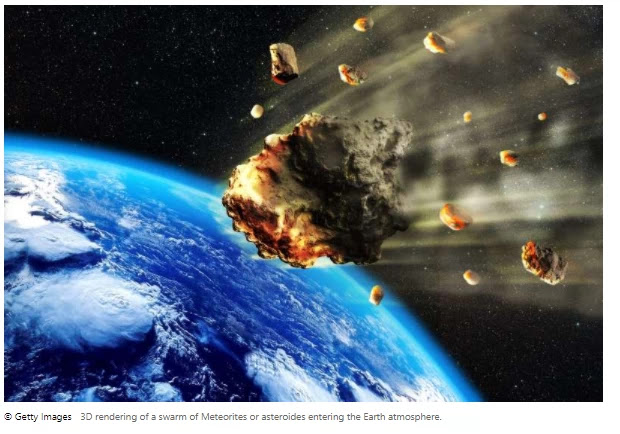A space rock has flown past Earth nearer than any observed previously.
The small article, known as space rock 2020 QG, came only 1,830
miles over the southern Indian Sea on Sunday, the space officials said.
As it did as such, it was spotted’ by the Zwicky Transient
Office, a mechanical camera that examines the sky looking for an assortment of
articles, from the littlest space rocks to the biggest supernova.
The space rock 2020 QG is especially little. It is around three
to six meters over, researchers stated, generally the size of a huge vehicle.
Its little size implied that it never presented a very
remarkable danger to Earth. In the event that it had flown towards us as
opposed to simply past, it would have transformed into a fireball and separated
in Earth's climate, as various little space rocks do every year.
By flying by so intently, be that as it may, it has entered the
record books as the nearest space rock known to have flown past Earth.
"It's truly cool to see a little space rock drop by this
nearby, in light of the fact that we can see the World's gravity drastically
twist its direction," said Paul Chodas, head of the Inside for Close Earth
Item Studies (CNEOS) at NASA's Fly Drive Research center.
"Our figurings show that this space rock got turned by 45
degrees or so as it swung by our planet."
Such space rocks are not thought’ to be uncommon – an object of
this size passes by this near-Earth once per year or something like that.
However, it is spotting it as it does that is troublesome, with new innovation
permitting such little items to be spotted all the more without any problem.
Nasa should have the option to follow these close Earth space
rocks on the off chance that any of them are huge and close enough to place
Earth in harm's way. The space organization has been entrusted with discovering
90 percent of close Earth space rocks that are 140 meters or greater, since
those articles could represent a noteworthy danger and are simpler to spot from
a good ways.
"It's a serious achievement to locate these minuscule
close-in space rocks in any case, since they pass by so quick," Chodas
said. "There's commonly just a short window of a few days prior or after
close methodology when this little of a space rock is sufficiently close to
Earth to be sufficiently brilliant however not all that nearby that it moves
excessively quick in the sky to be distinguished by a telescope."
The article was found’ by glancing through the pictures from the
ZTF, as a major aspect of a Nasa-financed program to track and study such space
rocks. As they fly over the sky, they leave streaks over the ZTF pictures, and
consistently a calculation glances through around 100,000 pictures looking for
those streaks, sending any encouraging ones onto the staff for additional
examination.
"A ton of the streaks are satellites, yet we can rapidly
experience the best pictures by eye to locate the genuine space rocks,"
said Bryce Bolin, a postdoctoral researcher in cosmology at Caltech and an individual from the ZTF group. "This most recent find truly shows that ZTF
can be utilized to find protests near Earth that are on possibly affecting
directions."
READ MORE








0 Comments